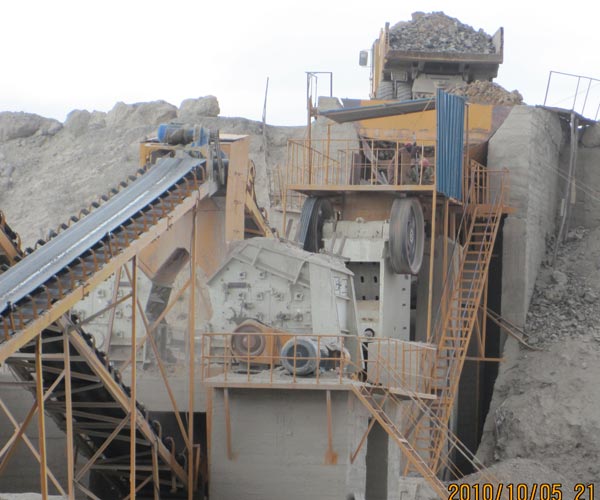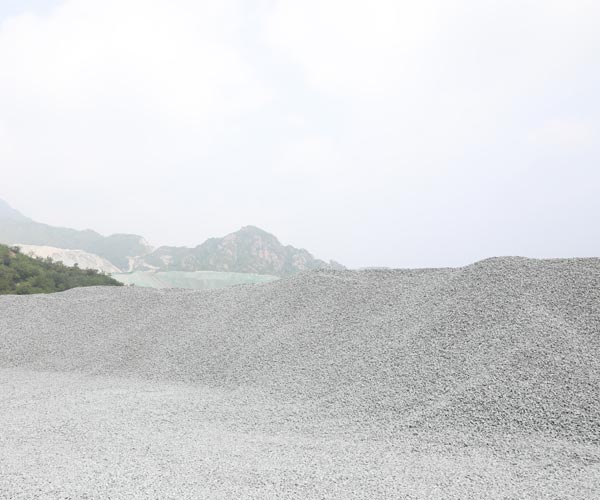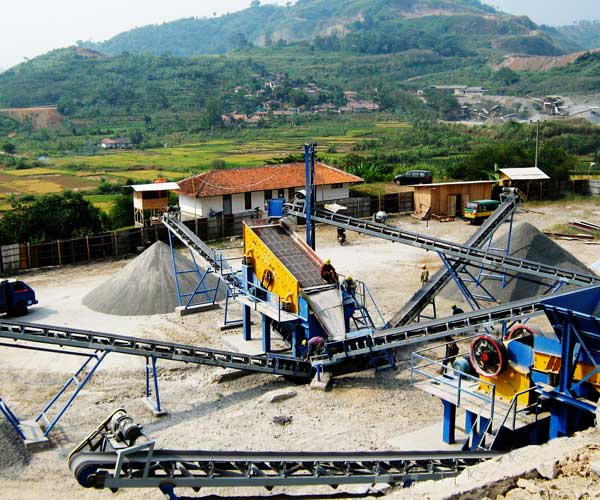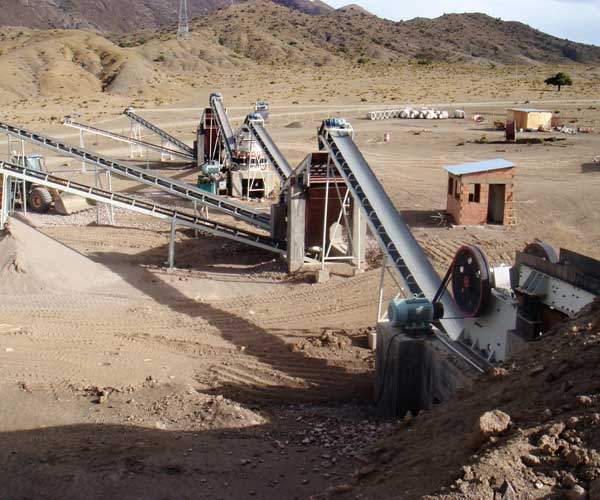
Selecting the right small stone crusher is a critical decision that can significantly impact your project’s success. By carefully considering factors such as size, capacity, power source, mobility, safety features, and maintenance requirements, you can make an informed choice that ensures efficiency, safety, and cost-effectiveness.
24 Online Service

Aggregate production is the backbone of construction and several other industries, serving as the fundamental building block for creating structures and products that enhance our daily lives.
Aggregate production refers to the process of extracting, crushing, screening, and washing materials like sand, gravel, crushed stone, and recycled concrete to create aggregates of various sizes and qualities. These aggregates are the essential ingredients in the construction of roads, buildings, bridges, and countless other structures. Essentially, they form the structural skeleton of our modern world.
Aggregate production is essential for several reasons, primarily in the construction industry but also in agriculture, landscaping, and manufacturing. Here are some key reasons why aggregate production is indispensable:
Aggregates serve as the foundation for constructing buildings, roads, bridges, and other infrastructure. They provide stability and strength to these structures, ensuring their longevity and safety.
Aggregates come in various sizes and types, making them suitable for a wide range of applications. From fine sand to large crushed stones, each type of aggregate serves a specific purpose in construction.
Aggregates are abundant and relatively low-cost materials compared to alternative construction materials. This makes construction projects more economically viable.
Recycled aggregates, such as crushed concrete and reclaimed asphalt, reduce the need for new materials and minimize waste disposal, contributing to sustainability efforts.
In agriculture, aggregates are used to improve soil drainage and aeration, making them essential for crop production.
Aggregate production involves various types of materials, each with its own unique properties and applications. Here are the primary types of aggregates and their uses:
Fine sand is used in concrete and mortar mixtures, while coarse sand is essential for creating a solid foundation for construction projects. Sand is also used in landscaping and as a component in manufacturing glass and ceramics.
Gravel is commonly used for road construction, as it provides excellent drainage and stability. It’s also used in concrete production and landscaping.
Crushed stone, often produced by crushing larger rocks, is a versatile material used in various construction projects, including road base, concrete production, and drainage systems.
Recycled aggregates, such as crushed concrete and reclaimed asphalt, are environmentally friendly options. They reduce the demand for new materials and are used in road construction and as a base material for new construction.
These aggregates are used in landscaping and for filling voids or depressions in construction projects.
Some aggregates are purely aesthetic and used in landscaping and interior design to enhance the visual appeal of outdoor spaces and architectural features.
Stone crushers are pivotal in the aggregate production process. These machines play a critical role in breaking down large rocks into smaller, more manageable pieces, which can then be used to create various types of aggregates. Here’s how stone crushers contribute to the aggregate production process:
In the initial stage of aggregate production, large rocks are blasted or excavated from quarries. Stone crushers, often jaw or gyratory crushers, are used to reduce these rocks into smaller sizes. Primary crushers set the foundation for the entire process.
After primary crushing, secondary crushers further reduce the size of the aggregates. These crushers can be cone crushers or impact crushers, depending on the desired aggregate size and quality.
In some cases, tertiary crushers are employed to refine the size and shape of the aggregates. This step is crucial for producing aggregates with specific characteristics required for certain applications, such as asphalt production.
Following crushing, aggregates may be screened to separate different sizes and remove excess fines. Washing can also be used to clean aggregates and remove impurities, ensuring the final product meets quality standards.
Stone crushers are integral to quality control in aggregate production. They help ensure that the aggregates meet the required specifications and standards for construction and other applications.
Modern stone crushers are designed with environmental sustainability in mind. Dust control measures and noise reduction technologies are often incorporated to minimize the impact on the surrounding environment.

This is where small stone crushers come into play. Small stone crushers are compact machines designed to crush rocks and stones into various sizes. These crushers have become indispensable tools in a wide range of industries, from construction and landscaping to mining and demolition.
Small stone crushers, as the name suggests, are compact and typically designed to be mobile or semi-mobile. They are smaller in size compared to their larger counterparts like jaw crushers and cone crushers. The size of these crushers can vary, but they are generally designed to be easily transported and operated in tight spaces, making them ideal for smaller construction projects or remote job sites.
In terms of capacity, small stone crushers are capable of processing a wide range of materials, from soft rocks to hard stones. Their capacity varies depending on the type and design of the crusher, but it typically ranges from a few tons per hour to a few hundred tons per hour. These crushers are versatile and can be adjusted to produce different sizes of crushed material, making them suitable for various applications.
Several types of small stone crushers are available in the market, each designed for specific applications and requirements. Here are some common types:
Small jaw crushers are popular for their simplicity and versatility. They consist of a fixed jaw and a movable jaw that compresses the material against the fixed jaw to break it into smaller pieces. Jaw crushers are commonly used for primary crushing tasks.
These crushers use the principle of impact to crush rocks. They have a high-speed rotor that strikes the material, causing it to break into smaller pieces. Impact crushers are suitable for both primary and secondary crushing.
While not as small as jaw or impact crushers, small cone crushers are still more compact than their larger counterparts. They operate by squeezing the material between a rotating mantle and a stationary concave. Cone crushers are known for their efficiency in producing well-shaped, cubical final products.
These crushers are equipped with rotating hammers that impact the material against breaker plates. Hammer mills are ideal for crushing softer materials like coal, limestone, and gypsum. They are often used in the mining and construction industries.
Understanding the key components and working principles of small stone crushers is essential to appreciate their effectiveness and versatility.
The crushing chamber is where the material is placed for crushing. It is typically lined with wear-resistant materials to withstand the abrasive nature of the rocks and stones being crushed.
Small stone crushers are powered by various methods, such as diesel engines, electric motors, or hydraulic systems. The drive mechanism provides the power needed to operate the crusher.
Depending on the type of crusher, there is a mechanism responsible for the actual crushing process. For example, in impact crushers, the rotor plays a crucial role in striking the material, while in jaw crushers, the movable jaw moves to crush the material against the fixed jaw.
Many small stone crushers are equipped with conveyor belts to transport the crushed material to a designated location, such as a stockpile or truck for further processing or transportation.
Modern small stone crushers often come with advanced control systems that allow operators to adjust the crusher’s settings and monitor its performance. This ensures optimal efficiency and safety.
The working principles of small stone crushers vary depending on their type, but the fundamental concept is to apply mechanical force to break down rocks and stones into smaller pieces. Whether it’s through compression, impact, or shearing, the goal is to reduce the size of the material for various purposes, such as construction aggregates or landscaping materials.

Small stone crushers have become an essential tool in various industries such as construction, mining, and landscaping. These machines are used to break down large rocks into smaller, more manageable sizes for different applications. Whether you’re a contractor, a quarry owner, or a homeowner with a landscaping project, choosing the right small stone crusher is crucial to ensure efficiency, safety, and cost-effectiveness.
The first and foremost factor to consider when buying a small stone crusher is its size and capacity. These machines come in various sizes and can handle different volumes of material. To determine the right size and capacity for your needs, consider the following:
The power source of a small stone crusher is a critical consideration, as it can affect both operational costs and environmental impact. There are two primary types of power sources for stone crushers:
The choice between electric and diesel/gasoline power depends on your specific application and location. Consider factors like fuel availability, operating costs, and environmental regulations.
The mobility of a small stone crusher is a crucial factor, especially for projects that require the crusher to be moved frequently. Depending on your needs, you can choose from three main types of crushers in terms of mobility:
When selecting a mobile stone crusher, consider factors like terrain conditions, transportation logistics, and the ease of setup and dismantling.
Safety is paramount when working with stone crushers, as they involve heavy machinery and potential hazards. Ensure that the crusher you choose incorporates essential safety features to protect operators and reduce the risk of accidents:
Regular maintenance is essential to keep your small stone crusher running smoothly and efficiently. Different crushers may have varying maintenance requirements, so consider the following:
Our Projects
Copyright © ZENITH, All Right Reserved.
